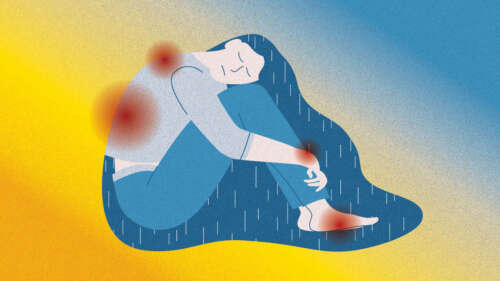
Chronic pain is one of the most common reasons that people seek out medical care. It can be caused by a variety of issues, from an ongoing injury to conditions like fibromyalgia. For many people, medication is the only way to get relief from persistent pain. But what if there was another way? In this post, we’ll explore some ways to get to the root of your pain and find chronic pain relief without the use of synthetic drugs.
So how do you know if you have chronic pain or just acute pain and what’s the difference? Chronic or lingering pain can have many causes, but often the main cause is deep-rooted. This can make finding sustainable pain relief a difficult and frustrating task. It’s important to understand that chronic pain is different from acute pain. Acute pain is a normal response to an injury or illness and typically goes away once the underlying problem is resolved. However, chronic pain, can persist for weeks, months or even years. An example is back pain that’s been present for longer than three months. It may be caused by an initial injury or illness, but it can also develop from other conditions like arthritis, fibromyalgia or nerve damage.
If you’re struggling with persistent pain, it’s essential to rule out any underlying medical conditions. Once any potential medical causes have been ruled out, you can begin to look for other possible triggers. Some common pain signals include:
1. Stress – Chronic stress can lead to muscle pain and headaches. It can also worsen conditions like fibromyalgia and irritable bowel syndrome.
2. Poor posture – Slouching or sitting in the same position for long periods can lead to back pain, neck pain and other types of long-standing pain.
3. Obesity – Carrying excess weight puts extra strain on your joints and muscles, which can turn into pain.
4. Sleep problems – If you’re not getting enough sleep, your body can’t heal properly. This can lead to chronic pain.
5. Sedentary Lifestyle – Lack of exercise can create a myriad of issues, both physically and mentally.
Long standing, deep-rooted pain can make it difficult to perform everyday activities, enjoy hobbies and even get a good night’s sleep. It can stop you from living the life you want. That’s why many people are looking for alternatives to medication when it comes to chronic pain relief. There are many different alternatives out there and because we are all unique, you have to find what works for you.
Consider trying modalities like acupuncture, physical therapy or massage. These alternative treatments can help relax your muscles, increase blood flow and reduce inflammation. You can also try to relieve pain naturally with the help of herbal formulas and supplements like turmeric, ginger or omega-3 fatty acids. These natural remedies can help to reduce inflammation and pain. Medications frequently have side effects and many people prefer not to take them if they can avoid them. In many cases, it’s beneficial to consider integrative techniques for your overall wellness.
Exercise is another alternative method that can help alleviate chronic pain. For some, the idea of exercising when feeling pain seems counterintuitive. But science shows that movement, even slow movement, can improve pain levels, increase circulation and reduce inflammation. Yoga, tai chi and other forms of gentle stretching can also help to relieve pain.
Stress and anxiety are two of the biggest contributing factors to chronic pain. If you’re struggling with continuous pain, consider trying relaxation techniques like meditation or deep breathing exercises. Most of us do not realize that when we are in a stress response (fight or flight), we breathe more shallowly. This can tighten the muscles in all areas of the body, causing pain and even headaches.
It’s also helpful to know the difference between pain relief and pain management. Pain relief is the goal of many treatments and typically involves reducing or eliminating the experience of pain. To eliminate aches without medication or surgery, pain relief treatments focus on finding the source of the pain and addressing it directly. Moreover, pain medicine is often used as a “quick fix” rather than a long-term management solution.
Pain management, on the other hand, has a broader focus and typically includes minimizing the impact of lingering pain on your quality of life. This may include things like identifying pain signals and finding ways to minimize pain. Pain management may also include lifestyle modifications, such as exercising and getting enough rest.
If you or a loved one is suffering with chronic pain, why not give East Asian Medicine a shot? This 3000 year old medical system offers a lot of choices when it comes to alleviating chronic pain. Modalities like acupuncture, cupping, moxibustion and herbs are all within the scope of the East Asian Medical practitioner and can provide significant relief when pain becomes long lasting.
Regardless of what method you choose to address chronic pain, know that there are always options. While pharmaceuticals and surgery have become the norm, they don’t have to be.

